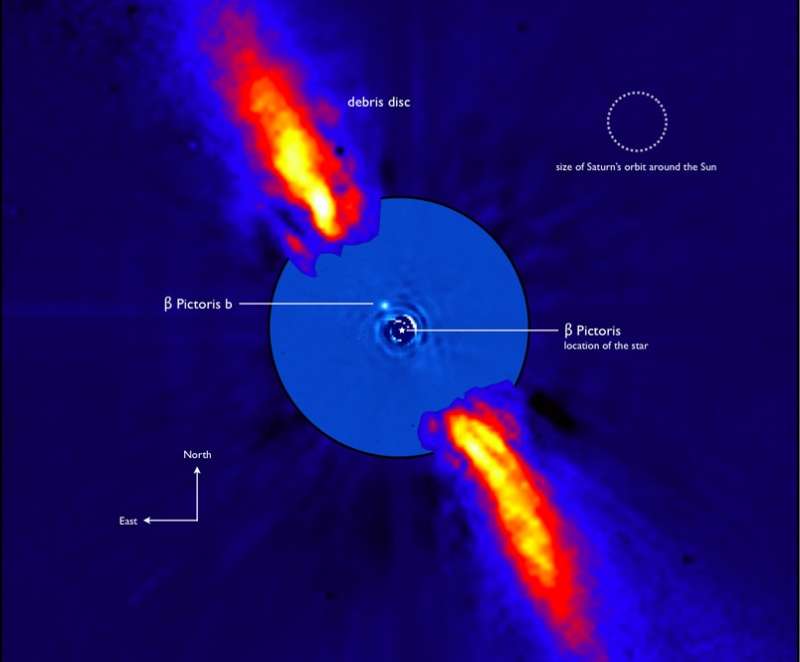
|
Explanation: A mere 50 light-years away, young star Beta Pictoris became one of the most important stars in the sky in the early 1980s. Satellite and ground-based telescopic observations revealed the presence of a surrounding outer, dusty, debris disk and an inner clear zone about the size of our solar system -- strong evidence for the formation of planets. Now, infrared observations from European Southern Observatory telescopes incorporated in this composite offer a detection of a source in the clear zone that is most likely a giant planet orbiting Beta Pic. Designated Beta Pictoris b, the new source is more than 1,000 times fainter than the direct starlight that has been carefully subtracted from the image data. It is aligned with the disk at a projected distance that would place it near the orbit of Saturn if found in our solar system. Confirmation that the new source is a planet will come if future observations can demonstrate that the source moves in an orbit around the star. When confirmed, it will be the closest planet to its parent star directly imaged ... so far.
|
January February March April May June July August September October November December |
| ||||||||||||||||||||||||||||||||||||||||||||||||
NASA Web Site Statements, Warnings, and Disclaimers
NASA Official: Jay Norris. Specific rights apply.
A service of: LHEA at NASA / GSFC
& Michigan Tech. U.
Based on Astronomy Picture
Of the Day
Publications with keywords: extrasolar planet
Publications with words: extrasolar planet
See also:
- APOD: 2025 September 8 Á IRAS 04302: Butterfly Disk Planet Formation
- APOD: 2024 July 8 Á Exoplanet Zoo: Other Stars
- Temperatures on Exoplanet WASP 43b
- Epsilon Tauri: Star with Planet
- APOD: 2023 October 17 Á PDS 70: Disk, Planets, and Moons
- APOD: 2023 September 20 Á Methane Discovered on Distant Exoplanet
- APOD: 2023 June 6 Á Star Eats Planet
